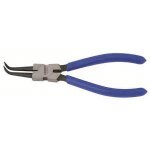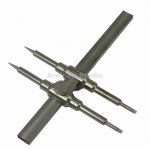I have discovered a lot of things while fixing up auctioned binoculars
that I wish were better documented. I have also watch bencw's and others'
restorations with interest, and I have made some thread clutter by describing
each restoration, and worked on even binoculars from the 90s and a few
years ago.
This thread would be a great place to collect up rework information
and also reduce the clutter elsewhere. Perhaps even copy in little
gems like where to get silicone damping grease and how to clean,
or impressive leather restoration. Even prism transplants!
So add what seems handy (and isn't hazardous)...let the explorers
keep a log.
that I wish were better documented. I have also watch bencw's and others'
restorations with interest, and I have made some thread clutter by describing
each restoration, and worked on even binoculars from the 90s and a few
years ago.
This thread would be a great place to collect up rework information
and also reduce the clutter elsewhere. Perhaps even copy in little
gems like where to get silicone damping grease and how to clean,
or impressive leather restoration. Even prism transplants!
So add what seems handy (and isn't hazardous)...let the explorers
keep a log.





